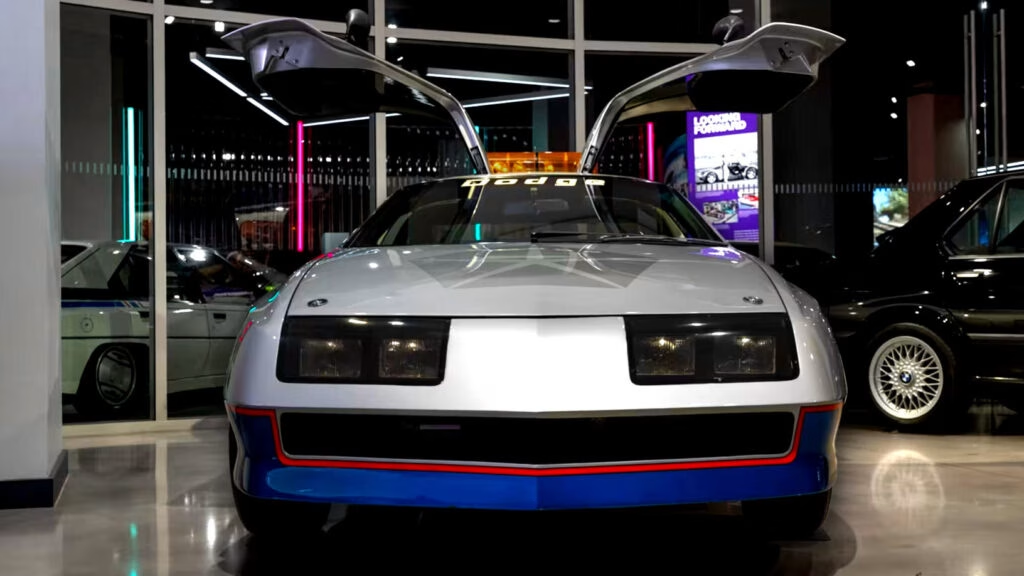What Makes the Dodge Turbo Charger Concept Stand Out at Auction?
Every so often, a car comes up for auction that makes even seasoned collectors do a double take. This September, the Dodge Turbo Charger concept is set to cross the block as part of the Klairmont Kollections Automotive Museum’s closure. Unlike the usual suspects at Monterey Car Week, this auction is a bit of a wild card: nearly 300 vehicles, no reserve, and a lineup that ranges from a horse-drawn hearse to a 2006 Dodge Magnum SRT-8. But it’s the Turbo Charger concept that’s quietly stealing the spotlight.
Why Is the Dodge Turbo Charger Concept So Rare?
First, let’s talk rarity. The Turbo Charger isn’t just another showpiece—it’s a one-off prototype that never made it to mass production. Originally built to serve as a pace car for the PPG Indy Car World Series in the early 1980s, this coupe also made appearances at the Detroit and Chicago Auto Shows in 1982. That means it’s not just rare; it’s a piece of motorsport and auto show history. Most concepts from this era were scrapped or lost to time, making survivors like this all the more intriguing.
How Does Its Design Differ from the Production Dodge Charger?
If you’re picturing the boxy Dodge Charger of the 1980s, think again. The Turbo Charger concept is a masterclass in aerodynamic experimentation. Up front, it sports a pointier nose and covered headlights—details that look more at home on a Le Mans prototype than a street car. Gullwing doors add a splash of drama, while NACA ducts and covered rear wheels scream function over form. The rear end is finished off with a sizable wing and a wide diffuser, both of which hint at the car’s performance ambitions. It’s the kind of design that makes you wonder what could have been if Dodge had gone all-in on this futuristic look.
What’s Under the Hood—And Why Does It Matter?
Pop the hood and you’ll find a turbocharged 2.2-liter four-cylinder engine. Back in the early ’80s, turbocharging was still a bit of a novelty for American automakers. This engine was a preview of what Dodge would soon offer in production cars, eventually delivering 142 horsepower and 160 lb-ft of torque. Not earth-shattering by today’s standards, but back then, it was a big deal—especially in a lightweight, purpose-built concept. The Turbo Charger also features a modified suspension with special shocks, springs, and sway bars, underscoring its role as a pace car and its potential as a performance benchmark.
What’s the Cabin Like? Is It All Show or Real Go?
Step inside and you’re greeted by a dashboard lined with 11 different gauges, stretching nearly the full width of the car. Some are so far from the driver’s seat, you’d need a co-pilot just to keep track. The cockpit is all business: Recaro seats, RJS harnesses, a roll cage, and a five-speed manual transmission. This isn’t just a pretty face—it’s a car built to be driven hard, even if it spent most of its life on display or leading a pack of Indy cars.
How Does the Turbo Charger Fit Into the Broader Auction?
The Klairmont Kollections auction is a bit of a time capsule. Alongside the Turbo Charger, you’ll find everything from microcars like the 1959 Goggomobil Dart Roadster to American Bantam classics. But the Dodge concept stands apart for its blend of motorsport pedigree, design audacity, and historical significance. It’s the kind of car that appeals to collectors who want something with a story—a car that’s as much about what it represents as how it drives.
What Should Collectors and Enthusiasts Watch For?
With concept cars, provenance is everything. The Turbo Charger’s documented history as a pace car and showpiece adds real weight to its value. According to data from Hagerty and other collector car experts, one-off concepts with motorsport connections have seen a steady uptick in interest and value over the past decade. The fact that this car is being offered without reserve could make for some fireworks on auction day. For the right buyer, it’s a chance to own a singular piece of Dodge history—one that’s unlikely to come around again.
The big takeaway? Chasing a car like the Dodge Turbo Charger concept isn’t about finding perfection—it’s about embracing the bold, the experimental, and the stories that make automotive history come alive. If you’re thinking about adding something truly unique to your collection, start by looking for cars that dared to be different. Sometimes, that’s where the real magic happens.

